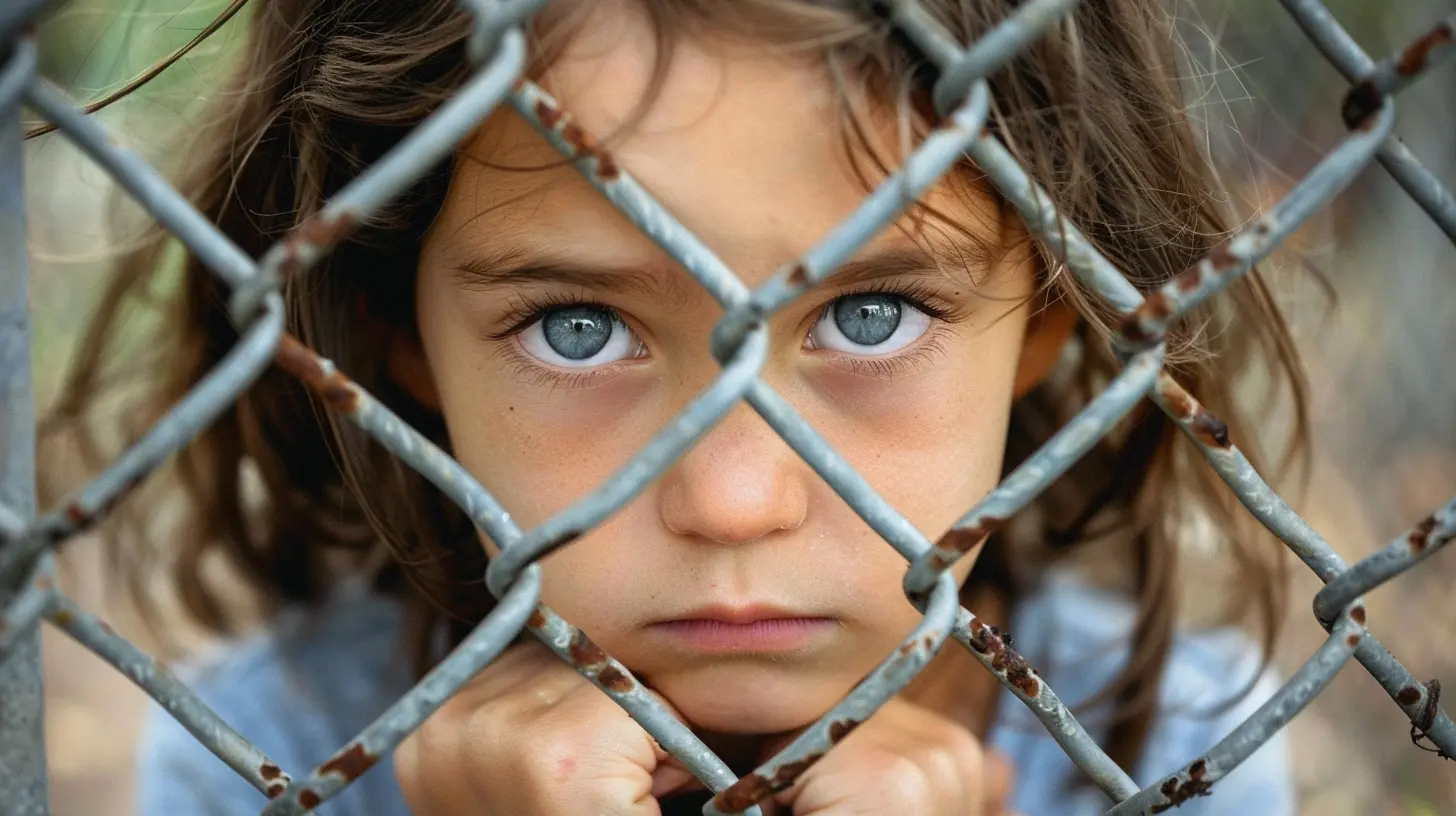How to Build Emotional Resilience in Your Child Through Attachment Parenting
25 July 2025
Parenting doesn't come with a manual, right? One minute you're changing diapers and singing lullabies, the next you're navigating emotional meltdowns and asking yourself, "Am I doing this whole parenting thing right?" If you've ever felt that way, you're not alone. The great news is that you can raise emotionally strong, confident children by simply focusing on one powerful parenting approach—attachment parenting. And no, it's not just about babywearing and co-sleeping; it's a whole mindset that nurtures emotional resilience from the inside out.
So grab a cup of coffee (or reheat it for the third time—we've all been there), and let's dive deep into how attachment parenting can lay the foundation for your child’s emotional strength.
What Is Emotional Resilience—and Why Does It Matter?
Before we get into the “how,” let’s break down the “what.”Emotional resilience is your child’s ability to bounce back from challenges, adapt to change, and navigate the ups and downs of life with confidence and optimism. Think of it like a rubber band—kids with emotional resilience might stretch during tough times, but they don’t break. They snap back, often stronger than before.
Now, imagine your child facing a tough day at school, a falling out with a friend, or maybe losing a beloved pet. These are big emotional waves. Emotional resilience won't stop the storm, but it helps them sail through it without sinking.
So, What’s Attachment Parenting Got to Do With It?
Attachment parenting is like the soil your child grows in. It’s the tender, consistent, and responsive care you give that teaches them, “Hey, the world is a safe place, and I matter.”When your child feels deeply connected to you, they naturally develop trust—not just in you, but in themselves and the world around them. That trust? It’s the cornerstone of emotional resilience.
The 7 Pillars of Attachment Parenting That Foster Emotional Resilience
Let’s get a little practical here. Attachment parenting isn’t just an idea; it’s made up of real, tangible habits. Here are the seven guiding principles—and how each helps build emotional resilience.1. Prepare for Pregnancy, Birth, and Parenting
Emotional resilience starts before your baby even enters the world. A calm, supported pregnancy and a nurturing birthing environment can lead to better brain development and emotional regulation in babies. When you're emotionally prepared, your baby picks up on that sense of safety and calm.Tip: Don’t aim for perfect. Aim for present. Parenting is a wild ride. Being emotionally prepared doesn’t mean being unshakeable—it means acknowledging the bumps along the way.
2. Feed with Love and Respect
Whether you choose to breastfeed, bottle-feed, or combo-feed, the key is connection. Feeding is more than nutrition—it’s a moment of bonding. These moments build trust and teach your baby that their needs matter.Real Talk: Responsive feeding (looking at cues instead of the clock) teaches children that their feelings will be acknowledged—not ignored or dismissed. And that’s a big trust-building lesson.
3. Respond with Sensitivity
Here’s the magic sauce. When your child cries, whines, or tells you they’re upset, how you respond has the power to shape their emotional roadmap.Harsh reactions teach kids to suppress or doubt their emotions. Sensitive responses? They validate your child’s feelings and give them the language and tools to express themselves healthily.
Try this: Instead of saying “You’re okay,” try “That looked scary; I’m here with you.” These simple affirmations let your child know it’s safe to feel.
4. Use Nurturing Touch
Little ones thrive on physical closeness. Skin-to-skin contact, cuddles, hugs—these aren’t just sweet, they actually lower stress hormones and release oxytocin (aka the love hormone).Touch is an unspoken reassurance that says, “I’ve got you.” And when life feels uncertain, that reassurance is like emotional armor.
5. Ensure Safe Sleep, Physically and Emotionally
Sleep is a beast, right? But beyond logistics, sleep is when emotional processing really kicks in. Kids who feel safe and supported during bedtime build better coping mechanisms and self-soothing abilities.Whether your child sleeps with you or in their own room, focus on creating a loving, calming bedtime routine. That predictability? It’s like an emotional anchor.
6. Provide Consistent and Loving Care
It’s not about being a perfect parent; it’s about being a present one.Consistency builds trust. If your baby knows mama or dada will be there—most of the time—they’ll develop a secure attachment. And with that comes inner confidence.
Even when you’re apart (hello, work schedules), nurturing caregivers and familiar routines create a sense of emotional continuity.
7. Practice Positive Discipline
Forget time-outs and yelling. Positive discipline focuses on teaching, not punishing. When your child messes up (and they will), it’s actually a golden opportunity to strengthen emotional skills.Instead of saying, “Go to your room!” try, “Let’s take a break together and talk about what just happened.”
It’s these moments—yes, even the chaotic ones—that can grow your child’s emotional resilience. Because they learn that mistakes aren't the end of the world, just part of the learning curve.
Why Emotional Safety Builds Emotional Strength
Let’s call a spade a spade—life is tough sometimes. Our kids are going to face disappointments, failures, and heartbreaks. But when they grow up in an emotionally safe environment, they don't see these as personal flaws. They see them as challenges they can overcome.Emotional safety says:
- “Your feelings are valid.”
- “You can come to me with anything.”
- “You’re never alone in this.”
And when a child internalizes those messages, guess what? They begin to say them to themselves.
Building Emotional Resilience by Modeling It Yourself
Here's the part no one really talks about: your emotional resilience matters just as much as your child's.Kids are master observers. They watch how we handle stress, how we argue, how we self-soothe, and how we react when things go sideways. They soak it all in like sponges.
So, ask yourself:
- Do I apologize when I lose my cool?
- Do I show vulnerability and talk about my feelings?
- Do I take care of my mental health?
- Am I okay with not being okay?
Being emotionally resilient doesn’t mean having zero meltdowns. It means knowing how to rise after the fall—and showing your kid that they can, too.
Practical Everyday Habits to Encourage Emotional Strength
It’s the tiny, consistent actions that matter. Here are a few simple habits to weave into your family routine:1. Name the Feelings
“Looks like you’re frustrated because your toy broke. That makes sense.”Giving kids the vocabulary to express emotions is like giving them a compass for life’s storms.
2. Create a Safe Space for Big Feelings
Be the calm in their chaos. Even if your child is melting down over the wrong color cup, remind yourself—it’s not about the cup. It's about them learning how to navigate disappointment.3. Encourage Problem Solving
“Hmm, that didn’t go how you wanted. What can we try next time?”This builds their ability to adapt and take ownership of outcomes.
4. Celebrate Effort, Not Perfection
“You worked really hard on that drawing!” instead of “That’s the best drawing ever!”Effort-based praise encourages resilience far more than outcome-based praise.
5. Stick to Routines
Consistency brings comfort. Even the simplest routines (story time, breakfast chats, bedtime cuddles) create emotional security that strengthens resilience.What If You Didn’t Start Attachment Parenting from Day One?
Hey, real talk—no guilt allowed here. It’s never too late. Attachment parenting isn’t a strict set of rules—it’s a mindset. You won’t always get it right. No one does.Even making small shifts—like listening more, yelling less, hugging longer, or pausing before punishing—can have a big impact. Your child doesn’t need a perfect parent. They need a present, loving one.
The Long-Term Impact: Raising Strong, Compassionate Humans
By building emotional resilience through attachment parenting, you're doing more than raising a kid who can handle playground squabbles. You're nurturing a future adult who:- Is empathetic and kind
- Can handle life’s curveballs
- Stands up after failure
- Builds healthy relationships
- Knows their worth isn’t tied to achievements
And isn’t that the dream?
You’re not just parenting. You’re laying down emotional roots that will support your child for a lifetime.
Final Thoughts: You’ve Got This
Building emotional resilience in your child doesn’t require perfection. It just takes intention. A warm hug, a listening ear, a few deep breaths during tantrums, and a whole lot of love—that’s the magic formula.Attachment parenting creates the space where emotional strength can grow. It's like you're building your child's emotional toolkit, one nurturing moment at a time.
So next time things feel tough, whether it’s a tantrum in the grocery store or a tough bedtime, remember: you’re not just surviving—you’re planting seeds of resilience.
And trust me, those seeds? They’ll blossom in the most beautiful ways
all images in this post were generated using AI tools
Category:
Attachment ParentingAuthor:

Max Shaffer
Discussion
rate this article
2 comments
Luna Ward
Great article! Building emotional resilience through attachment parenting fosters deep connections and trust. Emphasizing open communication and consistent support truly equips children to navigate life's challenges. Thank you for sharing!
November 20, 2025 at 4:10 AM

Max Shaffer
Thank you for your thoughtful comment! I'm glad you found the article valuable and agree on the importance of open communication and support in fostering emotional resilience.
Carmen Pope
Wonderful insights! Fostering emotional resilience through attachment parenting truly strengthens the parent-child bond and helps children navigate life’s challenges with confidence and support.
August 5, 2025 at 3:15 PM

Max Shaffer
Thank you! I'm glad you found the insights valuable. Strengthening that bond is key to helping children thrive!


